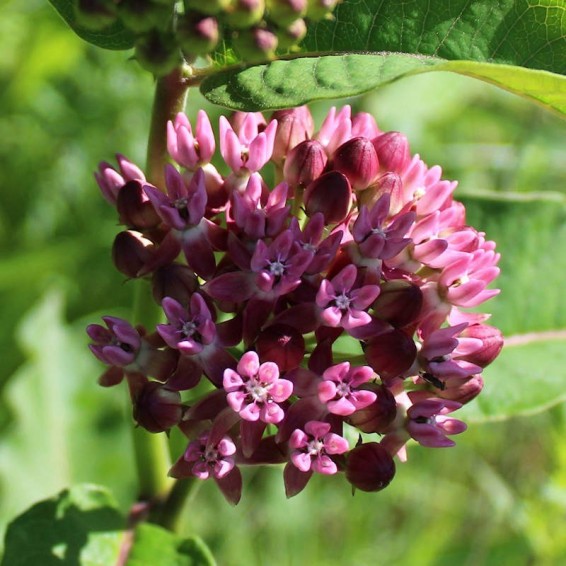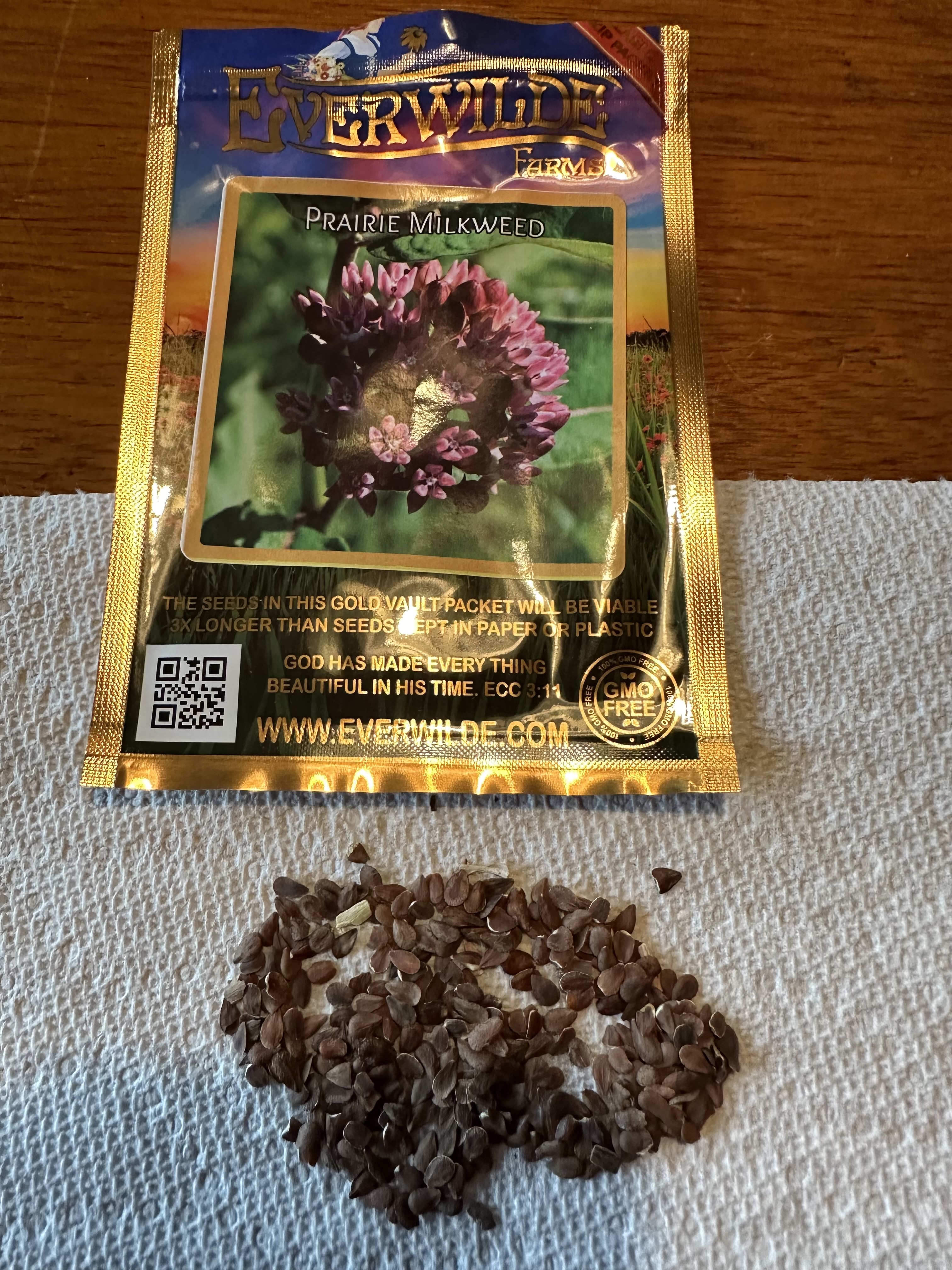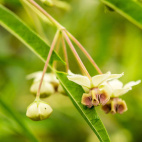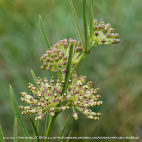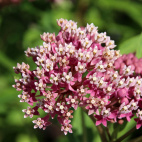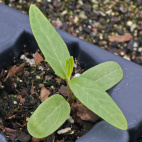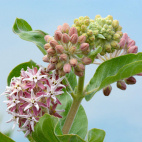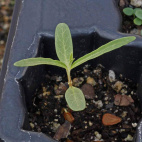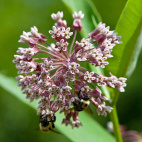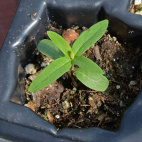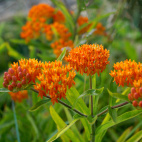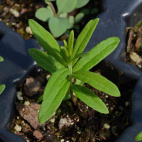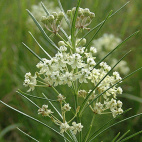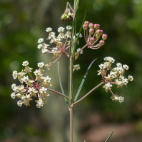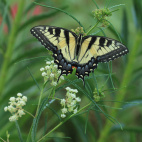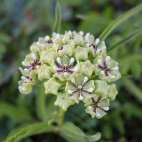Prairie Milkweed Seeds
- HOW TO GROW
- FAST FACTS
- REVIEWS
HOW TO GROW
Sowing: In late fall, direct sow prairie milkweed seeds just below the surface. Germination will take place in the spring, after the last frost. When the seedlings appear, thin to the strongest plant; seedlings usually do not survive transplanting, since they resent any disturbance of their roots. For spring planting, mix the Asclepias Sullivantii seeds with moist sand and refrigerate for 30 days before direct sowing.
Growing: Young plants should be watered until they become established; mature plants can tolerate some drought but grow best with regular watering. Though not invasive, this plant will eventually spread by rhizomes and forms colonies in the wild. It will also self seed if left to drop its seed. The flowers attract many bees and butterflies, including swallowtails, red admirals, an hairstreaks. Deer avoid this plant.
Harvesting: This makes a striking cut flower. Cut the stems long, choosing flowers that have just opened. Keep in mind that the milky sap is mildly toxic and can irritate the skin.
Seed Saving: After the plant finishes flowering, 3-4" narrow pods will form. Be sure to harvest the pods before they split and the silky fluff carries the seeds away on the wind. As soon as the Asclepias Sullivantii seeds inside the pod ripen to their mature brown color, remove the pods and spread them out to dry. Split open the pods and take out the silky seed material. Remove the fluff from the seeds. Store the prairie milkweed seeds in a cool, dry place.
FAST FACTS
Common Names: Sullivant's Milkweed, Smooth Milkweed
Latin Name: Asclepias sullivantii
Species Origin: US Native Wildflower
Type: Native Wildflowers
Life Cycle: Perennial
USDA Zones: 4, 5, 6, 7
US Regions: Plains/Texas, Midwest
Seeds per Ounce: 3,900
Stratification: Cold/Wet for 4 Weeks
Germination Ease: Stratify 4 Weeks
Sunlight: Full Sun
Height: 36 Inches
Color: Pink
Bloom Season: Blooms Early Summer, Blooms Late Summer
Uses: Attracts Pollinators, Attracts Honeybees, Attracts Butterflies, Hummingbirds, Deer Resistant
Seed packet
Haven't sown the seeds yet
Service
Great to do business with. Very easy and I recieved my order very fast. I will definitely order from you again.
Seeds
I always receive speedy service with Everwilde. I appreciate the premium packaging for longevity of the seeds. Always high quality with Everwilde!
Prairie milk seeds
I am very pleased with the seeds from Everwilde Farms. I received my packages very quickly. All the areas that I have planted my seeds have sprouted and begun to grow into plants. I will continue to buy seeds ftom Everwilde Farms.
DESCRIPTION
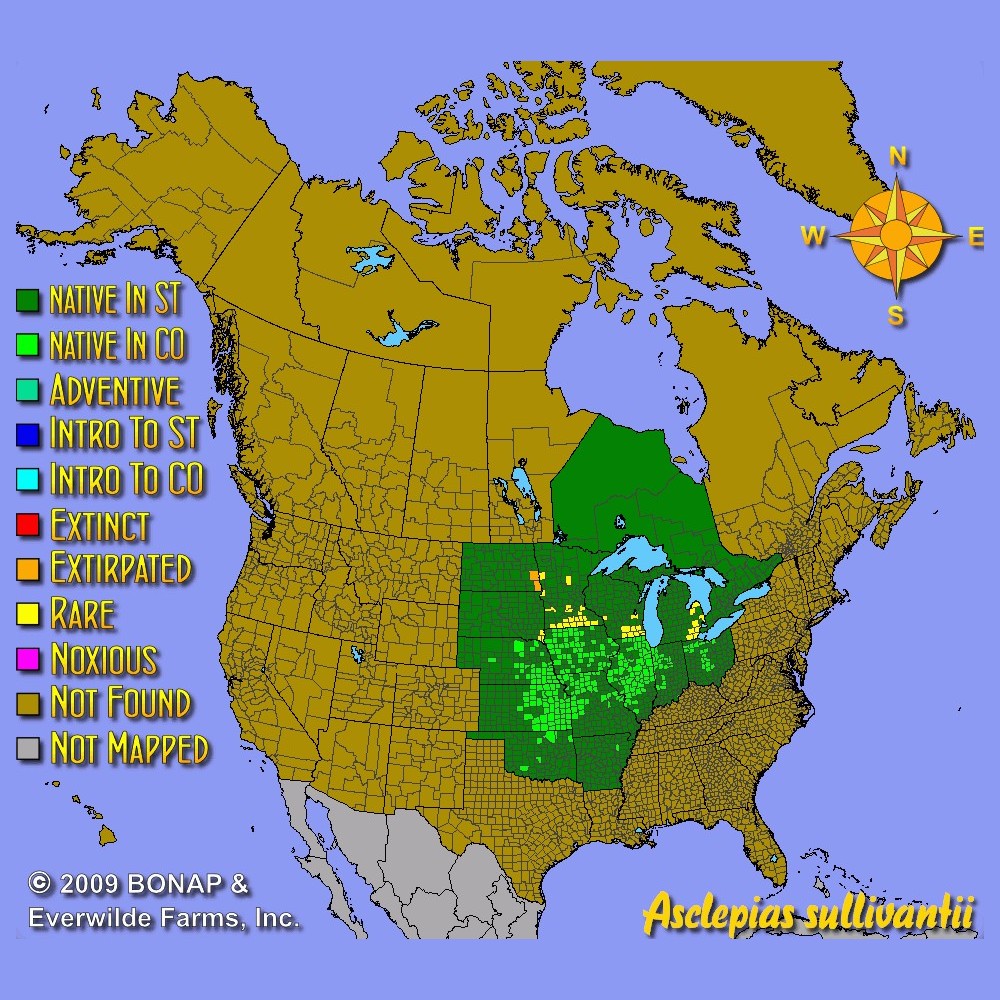
HOW TO GROW
Sowing: In late fall, direct sow prairie milkweed seeds just below the surface. Germination will take place in the spring, after the last frost. When the seedlings appear, thin to the strongest plant; seedlings usually do not survive transplanting, since they resent any disturbance of their roots. For spring planting, mix the Asclepias Sullivantii seeds with moist sand and refrigerate for 30 days before direct sowing.
Growing: Young plants should be watered until they become established; mature plants can tolerate some drought but grow best with regular watering. Though not invasive, this plant will eventually spread by rhizomes and forms colonies in the wild. It will also self seed if left to drop its seed. The flowers attract many bees and butterflies, including swallowtails, red admirals, an hairstreaks. Deer avoid this plant.
Harvesting: This makes a striking cut flower. Cut the stems long, choosing flowers that have just opened. Keep in mind that the milky sap is mildly toxic and can irritate the skin.
Seed Saving: After the plant finishes flowering, 3-4" narrow pods will form. Be sure to harvest the pods before they split and the silky fluff carries the seeds away on the wind. As soon as the Asclepias Sullivantii seeds inside the pod ripen to their mature brown color, remove the pods and spread them out to dry. Split open the pods and take out the silky seed material. Remove the fluff from the seeds. Store the prairie milkweed seeds in a cool, dry place.
FAST FACTS
Common Names: Sullivant's Milkweed, Smooth Milkweed
Latin Name: Asclepias sullivantii
Species Origin: US Native Wildflower
Type: Native Wildflowers
Life Cycle: Perennial
USDA Zones: 4, 5, 6, 7
US Regions: Plains/Texas, Midwest
Seeds per Ounce: 3,900
Stratification: Cold/Wet for 4 Weeks
Germination Ease: Stratify 4 Weeks
Sunlight: Full Sun
Height: 36 Inches
Color: Pink
Bloom Season: Blooms Early Summer, Blooms Late Summer
Uses: Attracts Pollinators, Attracts Honeybees, Attracts Butterflies, Hummingbirds, Deer Resistant
Reviews
Review
Seed packet
Haven't sown the seeds yet
Review
Service
Great to do business with. Very easy and I recieved my order very fast. I will definitely order from you again.
Review
Seeds
I always receive speedy service with Everwilde. I appreciate the premium packaging for longevity of the seeds. Always high quality with Everwilde!
Review
Prairie milk seeds
I am very pleased with the seeds from Everwilde Farms. I received my packages very quickly. All the areas that I have planted my seeds have sprouted and begun to grow into plants. I will continue to buy seeds ftom Everwilde Farms.
Also Consider These:
-
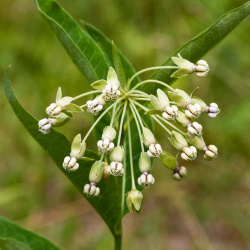 Poke Milkweed Seeds
Asclepias exaltata
These tall, elegant stalks can be found in woodland areas across the eastern United States and Canada. The white flower clusters are great for attracting monarch butterflies to a shaded garden.Quick Viewx
Poke Milkweed Seeds
Asclepias exaltata
These tall, elegant stalks can be found in woodland areas across the eastern United States and Canada. The white flower clusters are great for attracting monarch butterflies to a shaded garden.Quick ViewxPoke Milkweed Seeds
Asclepias exaltata
These tall, elegant stalks can be found in woodland areas across the eastern United States and Canada. The white flower clusters are great for attracting monarch butterflies to a shaded garden.
$4.96 Pkt - $270.00 / Oz -
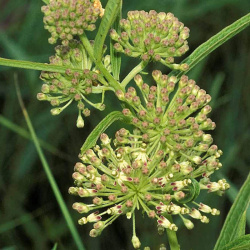 Tall Green Milkweed Seeds
Asclepias hirtella
Though not as well known as other varieties of milkweed, this tall variety distinguishes itself with abundant clusters of green-white flowers. It especially attracts monarch butterflies, so it is an excellent choice for a butterfly garden in full sun.Quick View$3.75 Pkt - $260.00 / Oz
Tall Green Milkweed Seeds
Asclepias hirtella
Though not as well known as other varieties of milkweed, this tall variety distinguishes itself with abundant clusters of green-white flowers. It especially attracts monarch butterflies, so it is an excellent choice for a butterfly garden in full sun.Quick View$3.75 Pkt - $260.00 / Oz -
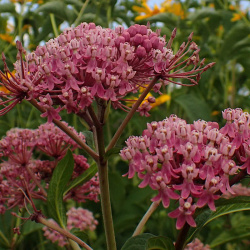 On Sale!
Swamp Milkweed Seeds
Asclepias incarnata
These showy, pink flowers give off a sweet scent similar to cinnamon or vanilla. Attractive to butterflies, this variety flourishes in swamps or along streams, so it is a great option for a butterfly plant in a wet setting. Swamp milkweed plants are a staple of many wetland plantings.Quick Viewx
On Sale!
Swamp Milkweed Seeds
Asclepias incarnata
These showy, pink flowers give off a sweet scent similar to cinnamon or vanilla. Attractive to butterflies, this variety flourishes in swamps or along streams, so it is a great option for a butterfly plant in a wet setting. Swamp milkweed plants are a staple of many wetland plantings.Quick ViewxSwamp Milkweed Seeds
Asclepias incarnata
These showy, pink flowers give off a sweet scent similar to cinnamon or vanilla. Attractive to butterflies, this variety flourishes in swamps or along streams, so it is a great option for a butterfly plant in a wet setting. Swamp milkweed plants are a staple of many wetland plantings.
$3.48 Pkt - $14.49 / Oz -
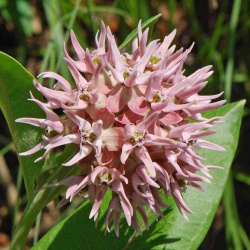 Showy Milkweed Seeds
Asclepias speciosa
A popular native wildflower in western North America, Showy Milkweed commonly occurs on rocky slopes, woodland areas, or streams. The sweet-scented pink blossoms draw many butterflies, so you will want this in your garden if you like butterflies!Quick View$3.48 Pkt - $17.72 / Oz
Showy Milkweed Seeds
Asclepias speciosa
A popular native wildflower in western North America, Showy Milkweed commonly occurs on rocky slopes, woodland areas, or streams. The sweet-scented pink blossoms draw many butterflies, so you will want this in your garden if you like butterflies!Quick View$3.48 Pkt - $17.72 / Oz -
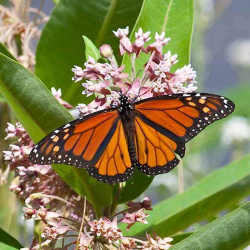 Common Milkweed Seeds
Asclepias syriaca
This familiar wildflower is a significant food source for monarch caterpillars and butterflies, and so it is used for butterfly gardens and waystations. This common variety spreads easily, but most gardeners do not mind if it spreads a bit.Quick View$3.48 Pkt - $12.65 / Oz
Common Milkweed Seeds
Asclepias syriaca
This familiar wildflower is a significant food source for monarch caterpillars and butterflies, and so it is used for butterfly gardens and waystations. This common variety spreads easily, but most gardeners do not mind if it spreads a bit.Quick View$3.48 Pkt - $12.65 / Oz -
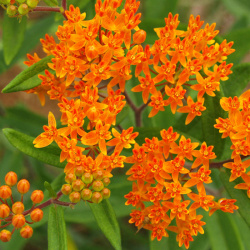 Butterfly Weed Seeds
Asclepias tuberosa
One of the most striking of native plants, Butterfly Weed lights up the prairies with its blazing orange flowers. Monarch Butterflies thrive on this plant, so it is a must for any butterfly garden on sandy soil. Butterfly milkweed seed thrives in rocky or sandy soil, typically in open fields or along roadsides.Quick Viewx
Butterfly Weed Seeds
Asclepias tuberosa
One of the most striking of native plants, Butterfly Weed lights up the prairies with its blazing orange flowers. Monarch Butterflies thrive on this plant, so it is a must for any butterfly garden on sandy soil. Butterfly milkweed seed thrives in rocky or sandy soil, typically in open fields or along roadsides.Quick ViewxButterfly Weed Seeds
Asclepias tuberosa
One of the most striking of native plants, Butterfly Weed lights up the prairies with its blazing orange flowers. Monarch Butterflies thrive on this plant, so it is a must for any butterfly garden on sandy soil. Butterfly milkweed seed thrives in rocky or sandy soil, typically in open fields or along roadsides.
$3.48 Pkt - $24.00 / Oz -
 On Sale!
Whorled Milkweed Seeds
Asclepias verticillata
This is a milkweed that grows in many regions of the United States. It is a late-blooming variety that is especially valuable as a butterfly host. The white flower clusters on the long, narrow leaves are a late-season food source for the Monarch Butterfly.Quick Viewx
On Sale!
Whorled Milkweed Seeds
Asclepias verticillata
This is a milkweed that grows in many regions of the United States. It is a late-blooming variety that is especially valuable as a butterfly host. The white flower clusters on the long, narrow leaves are a late-season food source for the Monarch Butterfly.Quick ViewxWhorled Milkweed Seeds
Asclepias verticillata
This is a milkweed that grows in many regions of the United States. It is a late-blooming variety that is especially valuable as a butterfly host. The white flower clusters on the long, narrow leaves are a late-season food source for the Monarch Butterfly.
$3.75 Pkt - $72.00 / Oz -
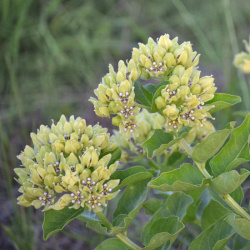 Spider Milkweed Seeds
Asclepias viridis
Known to attract flocks of butterflies, this milkweed features greenish-white flowers. It is native to the southern US, so it can take a lot of heat and is fairly drought resistant.Quick View$3.75 Pkt - $72.00 / Oz
Spider Milkweed Seeds
Asclepias viridis
Known to attract flocks of butterflies, this milkweed features greenish-white flowers. It is native to the southern US, so it can take a lot of heat and is fairly drought resistant.Quick View$3.75 Pkt - $72.00 / Oz




